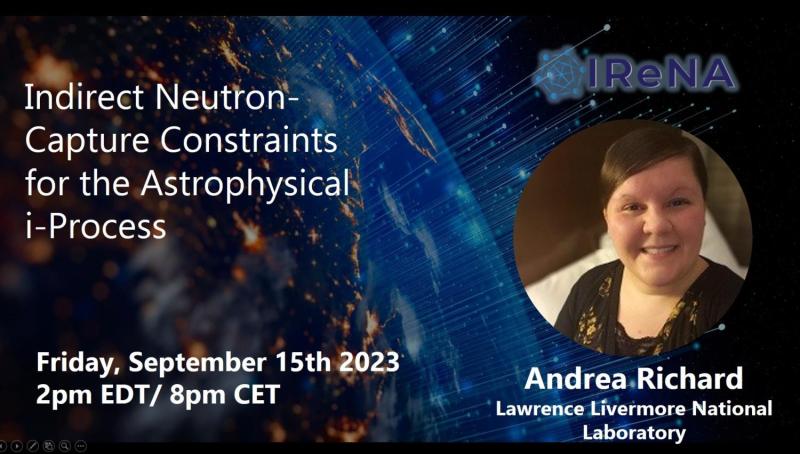Data
Indirect Neutron-Capture Constraints for the Astrophysical i-Process featuring Andrea Richard (LLNL)

Hosted by: Barbara Paes Ribeiro (TANDAR)
Neutron-capture nucleosynthesis occurs via a variety of processes depending on the astrophysical sites and conditions. Recent observations and stellar evolution models of carbon enhanced metal poor stars (CEMP) and Rapidly Accreting White Dwarf stars (RAWDs) suggest that an intermediate process, known as the i-process, exists between the traditional s- and r-processes, and is necessary to explain observed abundances in these environments. i-process nucleosynthesis is impacted by various nuclear data inputs, of which the main source of uncertainty arises from neutron-capture reaction rates. Direct neutron-capture measurements are only feasible for long-lived nuclei, while for short-lived nuclei, indirect techniques are required. In this presentation, I will discuss indirect neutron-capture techniques that have been developed over the last few years, namely the β-Oslo method and the Surrogate Reaction method, and how they can be applied across the nuclear chart at radioactive beam facilities such as the Facility for Rare Isotope Beams, CARIBU at Argonne National Laboratory, and TRIUMF to address i-process nucleosynthesis and beyond.
*This work was performed under the auspices of the US Department of Energy by Lawrence Livermore National Laboratory under Contract No. DE-AC52-07NA27344
